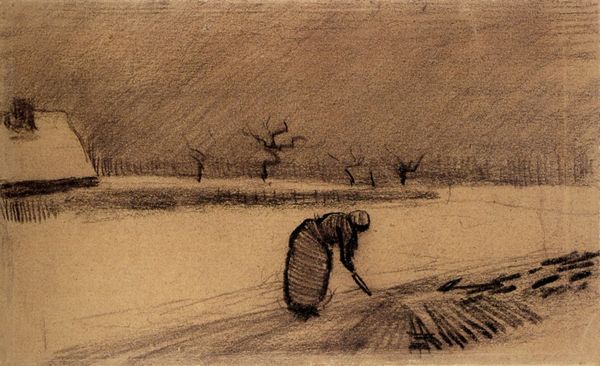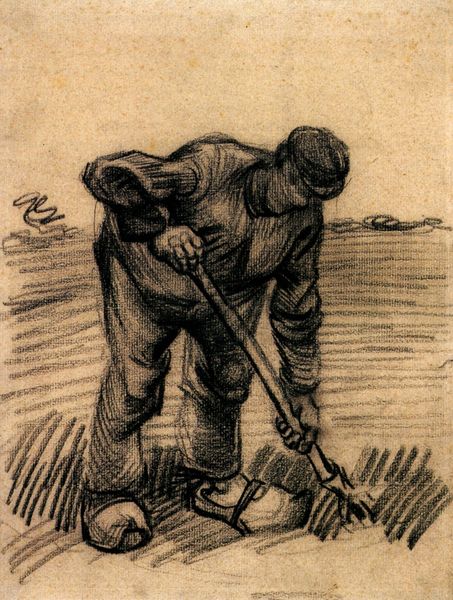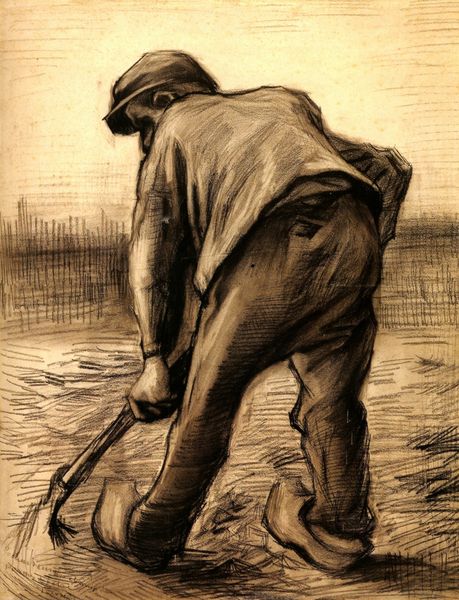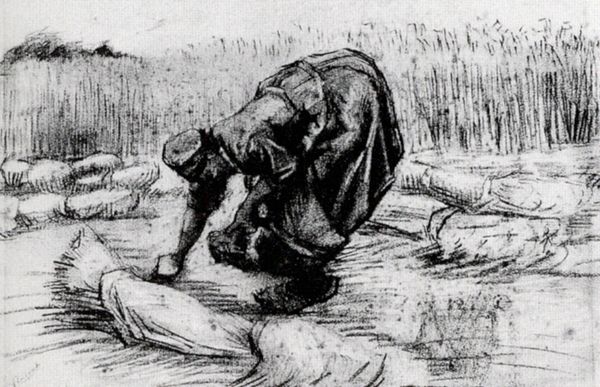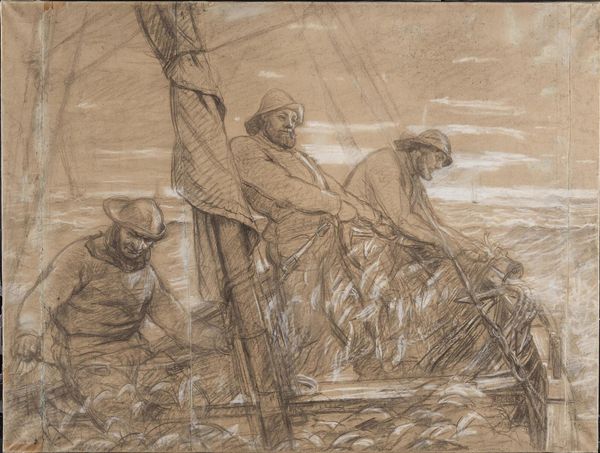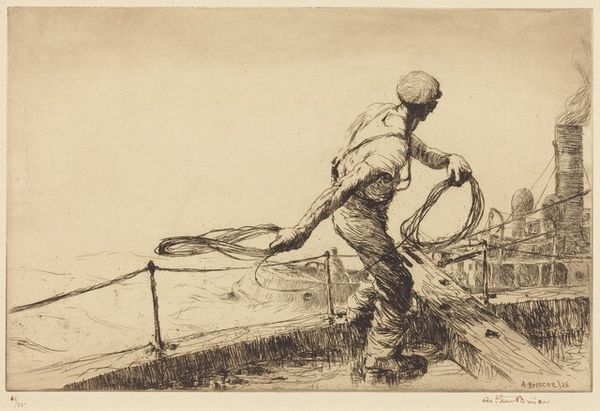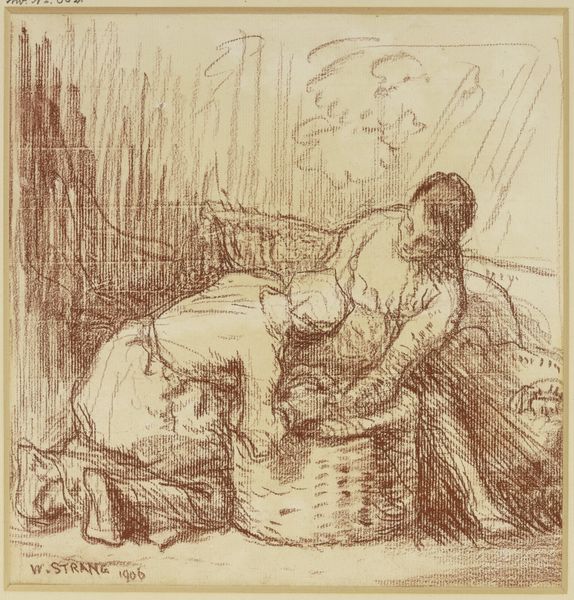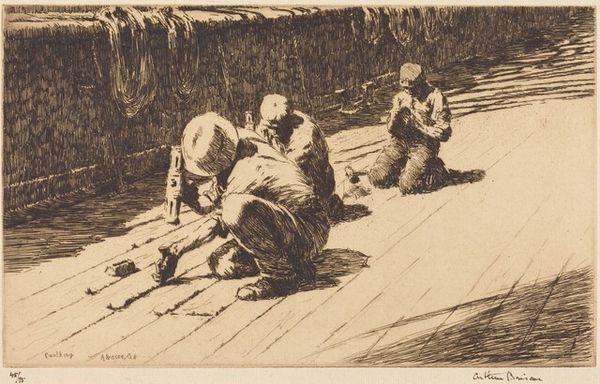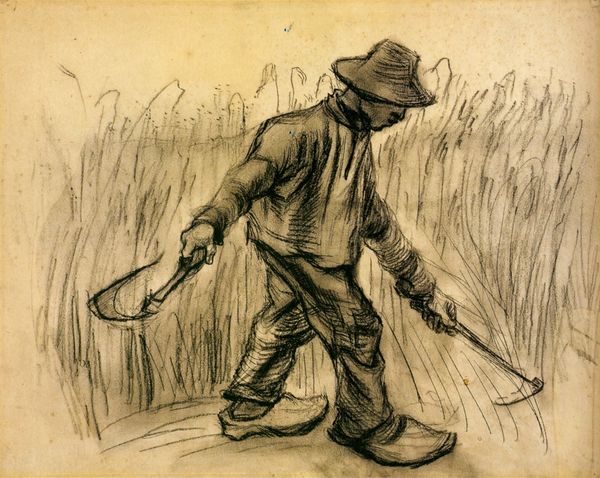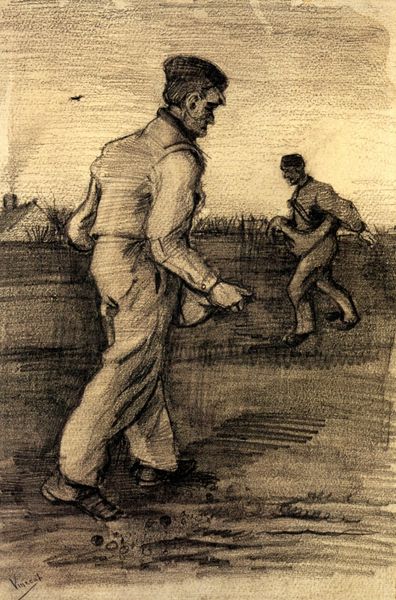
drawing, charcoal
#
portrait
#
drawing
#
pencil sketch
#
landscape
#
charcoal drawing
#
pencil drawing
#
genre-painting
#
charcoal
#
realism
Copyright: Public domain
Curator: Van Gogh's "Peasant Lifting Potatoes," created in 1885, depicts a solitary figure in a field. What strikes you about it? Editor: There's an immediate starkness, isn’t there? The heaviness of the charcoal emphasizes the labor but also feels almost oppressive, doesn't it? A grim scene of human toil in earthy, muted tones. Curator: Absolutely. This work offers an opportunity to consider how labor is represented in art and the social context it reflects. Consider how this portrayal engages with larger debates about class and social injustice prevalent at the time. How might this connect to, say, the later development of socialist realism? Editor: For me, it’s really about the process. Look at the way he's rendered the peasant, the almost brutal application of charcoal – it reflects the arduous nature of farm work. Van Gogh's relentless energy seems channeled through his hands into the making of the artwork mirroring the peasant's efforts in the field. Curator: True. We have to remember that he deliberately chose to depict rural life, often choosing subjects like peasants. It was, in part, a reaction against the bourgeoisie's norms that privileged aesthetics over raw lived reality, elevating subjects based on class status. Editor: And that focus on labor—the literal act of creating—is key. The visible marks and raw quality become integral to the piece's message. How the potatoes almost look like the same rough charcoal smudges as the soil…he's really collapsing any separation between the act of art-making, labor and land itself. Curator: Exactly! Van Gogh challenges us to confront our social assumptions and understand the laboring body beyond simplistic classist caricatures that often remove people's humanity. Editor: This wasn’t a romantic pastoral scene. This feels grounded, demanding that the viewer grapple with what's being consumed, from food to art itself. Curator: Indeed. This humble charcoal drawing encourages us to interrogate art's purpose and its capacity to reflect and reshape society's narratives. Editor: A potent reminder that art is also labor—and a reflection of the broader forces shaping our world.
Comments
No comments
Be the first to comment and join the conversation on the ultimate creative platform.

